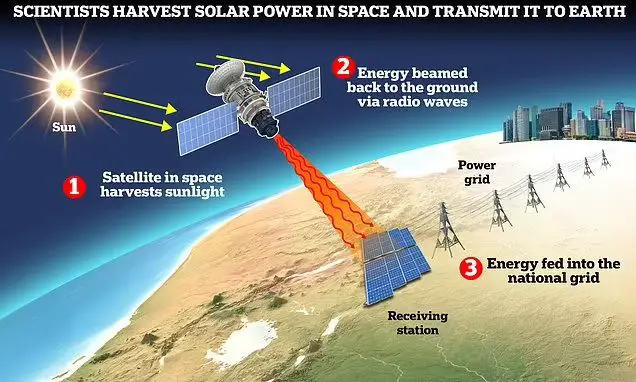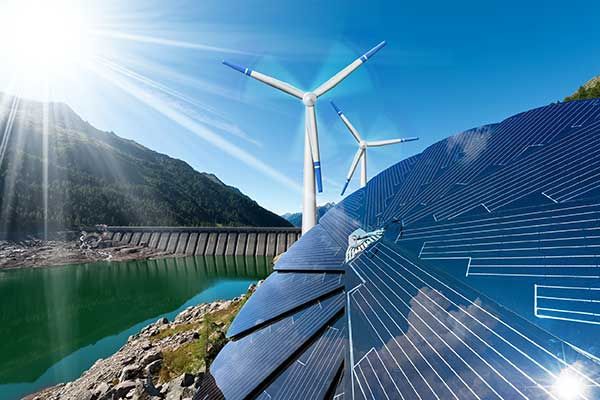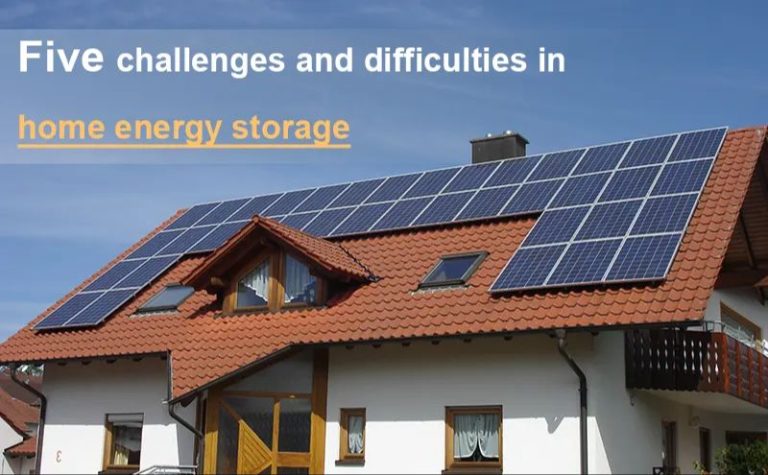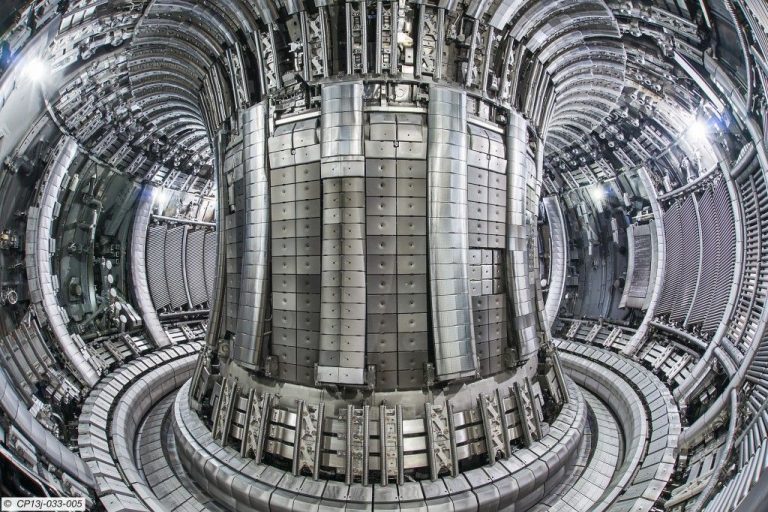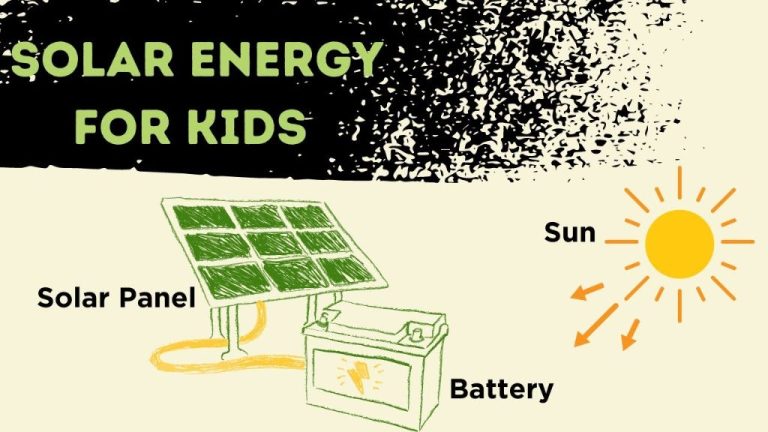What Is The Cost Of Enphase Micro Inverter?
Enphase Energy is a U.S based company founded in 2006 that pioneered microinverter technology for the solar industry. Microinverters convert the DC output of solar panels into AC current that can be used in homes and businesses. Unlike string inverters, microinverters maximize energy harvest from each solar panel and provide module-level monitoring and safety shutdowns.
According to Wikipedia, “Enphase was established in 2006 and is the first company to successfully commercialize the solar micro-inverter, which converts the direct current (DC) output of a single solar panel into alternating current (AC).”
As stated on their website, “Founded in 2006, Enphase transformed the solar industry with our revolutionary microinverter technology, which turns sunlight into a safe, reliable, resilient, and intelligent energy source.”
By 2008, Enphase had released its first microinverter product, the M175, after raising around $6 million in private equity funding (Zippia). Since then, Enphase has continued to innovate and expand its microinverter product line.
What is a Microinverter?
A microinverter is a small inverter that converts direct current (DC) electricity from a single solar panel into alternating current (AC) electricity that can be used in a home or sent back to the grid. Unlike string inverters which connect to multiple panels, microinverters connect to each panel individually.
Microinverters maximize energy production from each panel. If one panel is shaded or damaged, only that panel’s output is affected rather than the whole array. Microinverters also provide panel-level monitoring data to optimize the system. Source
The key difference from string inverters is that microinverters convert the DC output into AC at the panel level. This allows greater optimization, flexibility, and intelligence when compared to central inverters. Microinverters ensure maximum energy output from each individual panel. Source
Benefits of Microinverters
Microinverters offer several key benefits compared to traditional string inverters:
Performance: Microinverters maximize energy harvest by allowing each panel to operate at its maximum power point. This results in up to 25% more energy production than string inverters, especially in partial shade or uneven solar irradiation conditions [1].
Reliability: Microinverters are connected to individual panels rather than an entire string. If one panel fails, the rest of the system continues functioning. With string inverters, a single panel failure can take down the whole system [2].
Monitoring: Microinverters provide panel-level monitoring to detect issues quickly. String inverters only monitor the whole system. Microinverter monitoring makes maintenance and troubleshooting much easier.
Enphase Microinverter Models
Enphase currently offers several model series of microinverters:
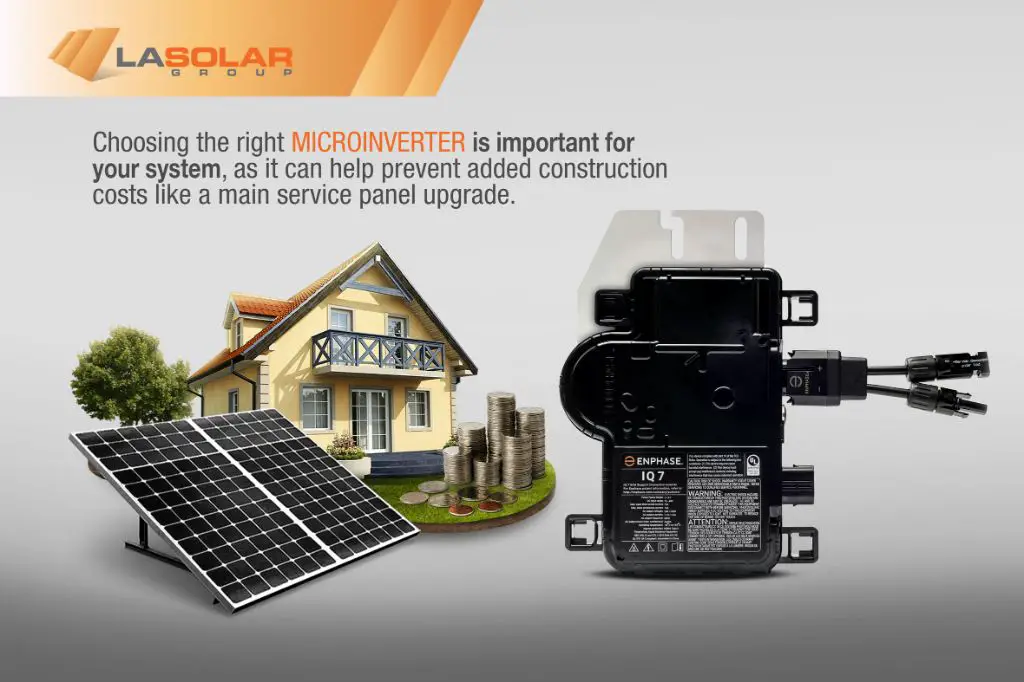
- IQ8 Series – This is Enphase’s newest line of microinverters released in 2021. The IQ8 is a grid-forming microinverter that can operate independently without a grid connection. Models include:
- IQ8A – 240W AC output
- IQ8H – 295W AC output
- IQ8M – 330W AC output
- IQ7 Series – Enphase’s previous generation microinverter released in 2016. The IQ7 models include:
- IQ7 – 240W AC output
- IQ7+ – 295W AC output
- IQ6 Series – Enphase’s legacy product line of microinverters. The IQ6 models are generally being phased out but still supported. Models include:
- IQ6 – 215W AC output
- IQ6+ – 240W AC output
All Enphase microinverters use a standard MC-4 connector for DC input and AC trunk cabling for grid connection. The key differences between models are the rated output wattage and next-generation capabilities like grid forming and rapid shutdown compliance.
Microinverter Pricing Factors
There are several key factors that influence the cost of Enphase microinverters:
Wattage – Microinverters come in various wattages, with higher wattage models generally being more expensive. Enphase offers models ranging from 190W to 385W. The IQ 7+ is one of their most popular 295W models.
Model – Enphase has different product lines for their microinverters, including the IQ 7 series, IQ 8 series, and IQ8D series. The newer IQ8D models contain dual microinverters and tend to be more expensive than IQ7 and IQ8 models. https://www.penrithsolar.com.au/blog/how-much-do-microinverter-solar-system-cost/
Bundle Discounts – Buying microinverters in bulk quantities rather than individually can lead to discounts. Enphase offers varying discount levels once minimum purchase volumes are met. Purchasing a complete bundled system with microinverters, panels, and other hardware can also lower overall costs compared to piecing together components separately.
Microinverter Cost Per Watt
The average cost per watt for Enphase microinverters ranges from $0.12 to $0.25 per watt, depending on the specific model. According to Enphase, their IQ 7+ microinverters cost around $0.12 per watt, while their higher-powered IQ 8 series costs closer to $0.25 per watt (https://formesolar.com/how-much-do-micro-inverters-cost/).
Compared to string inverters which cost around $0.05 to $0.10 per watt, microinverters do carry a higher upfront equipment cost. However, microinverter systems can make up for this premium over time through increased energy production, simplified design, and improved reliability.
When calculating total system costs, labor and additional hardware also factor in. A complete microinverter system may cost $2.50 to $4.00 per watt depending on system size and complexity.
Full System Cost Comparison
When comparing overall system costs, a microinverter system is typically more expensive upfront than a string inverter system. According to Solar Reviews, a 6kW solar system with microinverters costs around $3.30-3.80 per watt. In contrast, a 6kW string inverter system costs $2.40-3.00 per watt. The main factors in this cost difference are:
Microinverters themselves cost more. The average microinverter costs around $0.25/watt extra compared to string inverters. For a 6kW system, that can add $1500 or more to the upfront cost.
More cabling and connections are required for microinverter systems, adding hardware expenses. Each panel needs its own cable connecting it to the microinverter.
Microinverter installations take more labor time due to the extra connections and on-site programming required. This can add a few hundred dollars in additional installation fees.
However, microinverter systems can pay back some of the extra upfront costs over time. The optimized production from microinverters can lead to higher lifetime energy output and savings on electricity bills. Additionally, microinverters may require less maintenance over a system’s lifespan. So when weighing total 20-30 year costs, microinverters may end up cost competitive with string inverters in some scenarios.
Additional Hardware and Labor Costs
In addition to the microinverters themselves, there are other hardware costs associated with a solar installation including racking, wiring, and monitoring equipment. Racking to mount the solar panels averages around $0.25 per watt. Wiring and combiner boxes add another $0.15 per watt.
There are also labor costs for installation and getting the system operational. Typical installation costs range from $0.20 – $0.70 per watt depending on system size and complexity. In addition, most locations require a licensed electrician to connect the solar system to your home’s electrical panel or perform an upgrade. Electrician fees often add another $0.10 – $0.20 per watt.
When considering the total costs of a solar system with microinverters, homeowners need to factor in these additional hardware components and professional labor fees on top of the base microinverter costs.
Incentives and Rebates
There are various incentives and rebates available that can help offset the cost of installing a solar system with microinverters. The main ones are:
The federal solar tax credit allows homeowners to deduct 26% of solar installation costs from their federal taxes through 2034. This applies to both the solar panels and microinverters. See more details at https://enphase.com/solar-articles/federal-solar-tax-credit-2022.
Many states and utilities offer additional rebates and incentives for solar systems. For example, California has the Self Generation Incentive Program (SGIP) which provides rebates for adding energy storage along with solar PV. Check databases like DSIRE for state and local incentives.
Some utilities offer rebates based on the number of watts installed. For example, Salt River Project in Arizona offers rebates of up to $350 per kW for residential solar systems up to 10 kW. The microinverter cost per watt would directly factor into the overall rebate amount.
There are also new federal tax credits to encourage US manufacturing of solar components. For example, the 45X tax credit provides a production credit for domestic manufacturers. This could potentially apply to Enphase’s new manufacturing facility in Arizona. See more at https://www.canarymedia.com/articles/solar/enphase-to-manufacture-solar-inverters-in-us-spurred-by-new-tax-credits.
Taking advantage of all available incentives and rebates can significantly reduce the net cost of a home solar system with microinverters.
Conclusion
In summary, the cost of an Enphase microinverter system depends on several factors including the specific microinverter model, system size, additional hardware needs, and labor costs for installation. The microinverters themselves range from around $120-$290 each depending on the model. When calculating cost per watt, a typical Enphase system costs around $0.20 to $0.40 per watt. This is comparable or slightly higher than the cost of a string inverter system. However, Enphase microinverters provide benefits like panel-level monitoring, no single point of failure, and optimized production that can lead to higher lifetime energy output. This can offset the marginally higher upfront costs over the system lifetime of 20-25 years. Additionally, incentives and rebates for solar installations can help reduce the net cost. Overall, Enphase microinverters provide advanced functionality and reliability that makes the investment worthwhile for many homeowners and businesses.

